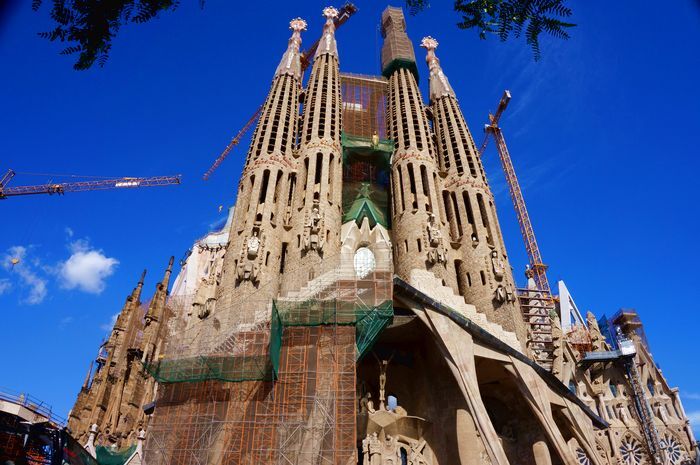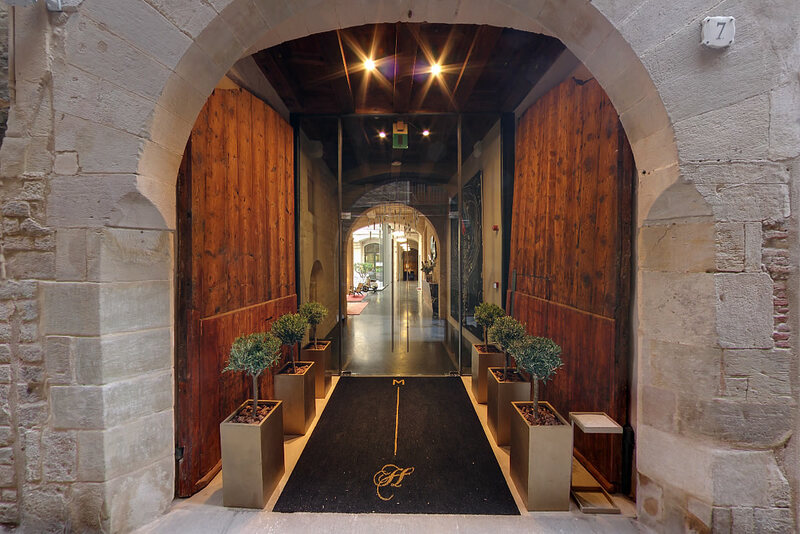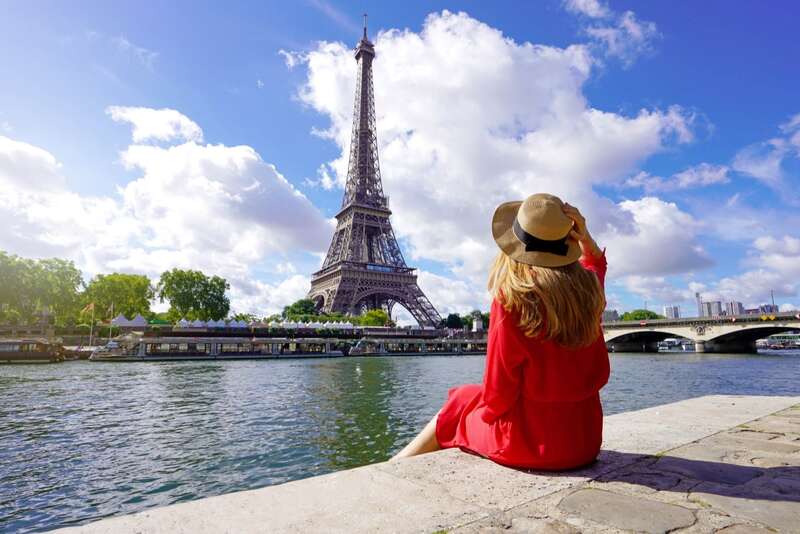It’s daunting.
There’s so much to see in Spain, and so little time. When we planned our trip in 2019, we didn’t know where to start. We wanted it all… beaches, food, sunshine, culture, and history. But with 17 regions to choose from, Spain seemed just too big to fit into 1 trip.
To make your life easier, I’ve put together a shortlist of the best regions to visit in Spain for a newbie to the Iberian Peninsula. Each region includes attraction highlights, essential dishes to try, and best places to stay.
No two regions in Spain are the same. So, it’s a big mistake to only visit one or two cities and think you’ve done the country justice. I have to point out, this list isn’t exhaustive, it’s just a starting point. Hopefully, once you’ve had a taste of Spanish hospitality, you’ll come to the same realisation I did… there’s no such thing as too many trips to Spain.
Spain tip:
Barceló Hotel Group is Spain’s 2nd largest hotel group, with a presence in 22 countries. You’ll find their properties in most tourist hotspots all over the country, with 74 available on their website. Currently, you can find Barceló Black Friday hotel deals with discounts of up to 60% off. In fact, every day in November 2020 is Black Friday! You can also stay with peace of mind thanks to their “We Care About You” program, which consists of strict safety and hygiene measures.
Now let’s jump into the best regions in Spain for your next visit:
Catalonia
Situated in the northeast of Spain, sandwiched between the Pyrenees and the Mediterranean Sea, Catalonia is Spain’s most visited region. And for good reason. You’ll find beaches, architecture, nightlife, Art Nouveau masterpieces, and Roman ruins, and that’s without even trying. Catalan culture and identity are expressed as a distinct language from the rest of Spain, so try brushing up on a word or two before you visit. The 2 most prominent cities in this region are Barcelona and Girona.

What to do:
Architecture buffs will be in heaven with Antoni Gaudí’s influence visible all over Barcelona – from the iconic La Sagrada Familia to Casa Batlló and Casa Milà. Explore the shady paths and eccentric architecture of Park Güell, or stroll the shopping strip of La Rambla. Art lovers should also visit Picasso Museum, and Museu Nacional d'Art de Catalunya on Montjuïc hill.
Take a day trip to the quaint town of Girona to explore the cobblestone lanes. Then venture further to Figures to witness the Dalí Theatre-Museum, dedicated to one of the world’s most renowned modern artists, Salvador Dalí.
Where to stay:
Barceló Raval - 182 rooms. Central location, very close to Las Ramblas. (map)
Occidental Diagonal 414 - 100 rooms. Boutique hotel located near La Casa de les Punxes. (map)
What to eat:
Strongly influenced by neighbouring Italy and France, Catalan cuisine draws inspiration from the land and sea. You should try escalivada (blackened tomatoes, peppers and aubergines), suquet de peix (fish stew), or mongetes amb botifarra (localised version of sausages and beans).
Madrid
Perched on the banks of the River Manzanares, Madrid is the beating heart and capital of Spain. As one of Europe’s cultural hubs, the city is filled with high-end fashion outlets that rival Italy’s Milan, and art galleries that give Florence a run for its money. You might think this city never sleeps, as it’s common for nightclubs to start swinging at 3am, whilst the Spanish tradition of siestas are less common.

What to do:
Culture seekers head to the 3 art museums within the “Art Triangle”: Prado Museum, Reina Sofia Museum, and Thyssen-Bornemisza. Featured European artists include El Greco Bosch, Rembrandt, Caravaggio, Botticelli, Pablo Picasso, Goya, and Velazquez. Pick up a “Paseo del Arte Pass” for around €40 for discounted access to all 3 museums.
Tour the Royal Palace, constructed on the site of the Moorish Alcázar fortress that was burned down in 1734. This is the largest royal palace in Western Europe (3,000 rooms!), and exhibits art and other collections.
Sport lovers will book a tour at Santiago Bernabéu Stadium, home to Real Madrid, one of the most successful football teams in Europe.Shop-a-holics throng to Gran Via, a hub of restaurants, shopping, and entertainment. Over Christmas, Madrid hosts some of the most popular seasonal markets in Europe.
Where to stay:
Barceló Imagine - 156 rooms. Décor focused on music, from rock to jazz to flamenco. Close to Plaza Castilla. (map)
Barceló Torre De Madrid - 258 rooms. 10-minute walk from the Royal Palace of Madrid. Opened in 2017, and recognised as “one of the best urban hotels” according to Wallpaper. (map)
What to eat:
Most of Spain’s classic dishes can be found in Madrid. Don’t miss crispy yet fluffy churros dipped in melted chocolate, found in chocolaterias down quiet alleys. Partake in the culture of sipping a drink on the terrace of one of Madrid’s 6,000 bars. Try Spanish sparkling wine (cava) or the famous wine cocktail, sangria. The best tapas restaurants are found in Chamberi neighbourhood centred around Calle Ponzano.
Valencia
This region was occupied by Moors during the 8th to 13th centuries and that heritage is still visible today in palm groves and architecture like the Silk Exchange (La Lonja de la Seda).
Christians recaptured the city in 1238 under King James 1st of Aragon, and ushered a new era for the region. Their influence is seen in the Gothic architecture at 2 entrance gates to the old city – Torres del Quart and Torres del Serrano.
Take a self-guided tour of Valencia Cathedral, home of the relic deemed the real holy grail by the Pope. The cathedral was constructed over a 750-year period and encompasses 3 types of architecture: baroque, gothic, and Romanesque.

What to do:
Explore the city’s iconic modern complex, the City of Arts and Sciences. This includes: Palau de les Arts Reina Sofia (state-of-the-art opera house shaped like a Spartan helmet), Museo de les Ciencies Principe Filipe (science museum shaped like a whale skeleton), and Oceanographic (an aquarium with exhibits including seahorses, sea stars, beluga whales, sharks, and more).
Go back in time in Valencia’s old town, at Museo del Almonia where ruins date back to the Roman foundations of 138 BC.
Tour the wine caves in the Utiel-Requena region to discover a fascinating heritage dating back to the 1800s when ancient Moorish caves were used to store large quantities of wine.
If you just want to put your feet up, relax on sandy beaches of Alicante, a seaside town popular with British tourists. Or if you’re seeking a vigorous hike, visit the Castle of Santa Barbara on the summit of Mount Benacantil.
Where to stay:
Barceló Valencia - 187 rooms. Facing the iconic City of Arts and Sciences. (map)
Occidental Alicante - 80 rooms. Recently refurbished, this hotel is close to the city’s old quarter and Santa Bárbara Castle. (map)
What to eat:
Paella, one of Spain’s best-known dishes, originates in the wetlands of Valencia’s Albufera Lake. It was originally made with venison and rabbit, but seafood and vegetarian varieties were created to cater for tourists.
Sip orxata, a sweet, vegan-friendly milk made from tiger nuts and traditionally served with a long donut-like bread called farton. This can be found at Central Market in the heart of Valencia’s old town.
Many other popular dishes centre around seafood, like arròsa banda, which originated in Alicante – rice topped with aioli served with a side of seafood.

Andalusia
Located at Spain’s southernmost point, Andalusia has a vastly different culture and architecture than the northern regions. It was the last area to be reconquered by the Christians. Muslim Moors ruled for 500 years during Middle Ages, and left behind many grand landscaped gardens, like Alhambra in Granada and Royal Alcázar in Seville.
Known for its vibrant colours, Andalusia is also the birthplace of famous Spanish traditions, bullfighting and Flamenco dance.
Game of Thrones fans will recognise locations like: Royal Alcázar in Seville (House of Martell in Dorne), Onsuna Bullring in Seville (fighting pit in Meereen), Ruins of Italica (Dragonpit in Kings Landing), and Castillo Almodovar del Rio (House of Tyrell in Highgarden).

What to do:
Walk through Moorish castles with landscaped gardens like Alhambra and the Nasrid Palaces in Granada or Royal Alcázar in Seville.
See an authentic Flamenco show in a historic cave in Granada’s gypsy neighbourhoods, or explore the Museo Picasso in Malaga – the birthplace of eccentric artist Pablo Picasso.
Visit the world’s largest Gothic Cathedral, Seville Cathedral, a UNESCO World Heritage Site.
Get into nature and explore the mountains of Sierra Nevada National Park – the southernmost ski resort in Europe. Hike the recently restored Caminito del Rey (King’s pathway) in Malaga, perched 100 meters above the river.
Chillaxers won’t miss out, with the beautiful (and historical) beach, Playa La Caleta in Cádiz.
Where to stay:
Barceló Málaga - 221 rooms. The hotel offers direct access to the AVE high-speed train station and is walking distance to numerous tourist attractions. (map)
Barceló Carmen Granada - 222 rooms. Just 10 minutes’ walk from Granada Cathedral. (map)
What to eat:
Andalusia’s food has been influenced by Moors, Sephardic Jews, Phoenicians and more. The region’s most iconic dish is gazpacho – cold tomato soup, usually served as an entree.
Every town has its own signature dishes, with most centring around fresh local produce: honey, olives, fruit and vegetables. The seafront towns of Malaga and Cadiz focus on seafood such as tuna and fish. Shrimp fritters are one of the most popular tapas in Cadiz. Inland, Seville uses pork as the main ingredient for many dishes, or even snails.
Balearic Islands
Located between 80 and 300km (50-190 miles) east of the Spanish mainland, these 4 islands include Mallorca, Ibiza, Menorca, and Formentera.
Traditionally residents survived on agriculture, with Mediterranean staples of wheat, grapes, almonds, and olives. In recent decades the tourism industry has grown rapidly and is now the main economic driver. Handicraft and manufacturing exist primarily for tourism: fine lace, embroidery, shoes, and textiles.
Majorca is laid back dotted with all-inclusive luxury resorts, while Ibiza sports a renowned nightlife. The landscapes of the Balearic Islands range from mountainous peaks to sandy flat beaches.
The native language is Catalan (or Ibicenco on Ibiza and Formentera), however, most locals also speak Spanish (Castillano).

What to do:
Nature lovers are in paradise here. Explore Mallorca’s famous cave, Cuevas del Drach (Dragon’s cave) which holds concerts on an underground lake. Or go back in time with prehistoric rock formations, Talati de Dalt, on Menorca.
For a relaxing adventure, take a yacht tour between the islands. And once you reach Ibiza, go horse riding, learn to scuba dive, or attend a music festival.

Where to stay:
Occidental Playa de Palma - Located only 200 metres from the popular El Arenal Beach. The on-site wellness centre features a sauna, a Turkish bath, a heated indoor swimming pool and a massage service. (map)
Occidental Ibiza - 364 rooms. Located just a few metres from the magnificent Port des Torrent Beach. (map)
What to eat:
These islands are heavily influenced by Catalan cuisine with stews, soups, and spiced meat at the top of the menu. Restaurants and cafes cater to the tastes of international tourists so many popular dishes are available.
Being surrounded by sea, it’s not surprising that seafood is readily available. The most popular options are shellfish, salted cod, grilled squid, and prawns cooked in garlic. Cheese abounds in goat or sheep form. Flao de Ibiza is a sweet cheese-filled pastry found on Ibiza, traditionally served around Easter. While ensaimada, a spiral pastry topped with icing sugar and filled with cream or fruit, can be enjoyed year-round.
Canary Islands
In the early days of American colonialism, the Canary Islands were positioned at the crossroads. Being exempt from Europe’s cold winter, these islands now draw tourists all year round, with the 5 most popular being Tenerife, Gran Canaria, La Palma, Lanzarote, Fuerteventura.
You’ll probably recognise the Canary Islands as the backdrop for blockbuster movies such as Clash of the Titans (Lanzarote), The Dictator (Fuerteventura), Fast & Furious 6 (Tenerife), Jason Bourne (Tenerife), Exodus: Gods and Kings (Fuerteventura), and Han Solo (Fuerteventura).

What to do:
Most activities on the Canary Islands focus on nature and relaxation. Explore Teide National Park on Tenerife and witness some of the best night-time star viewing opportunities. Visitors can also climb Mt Tiede, an ancient dormant volcano.
Take a dolphin-watching tour off the coast of Fuerteventura, or go surfing at El Cotillo Beach. Play on Gran Canaria’s sand dunes at Maspalomas Beach, or for a little culture visit colourful towns like Teror on Gran Canaria.
Where to stay:
Santa Catalina, a Royal Hideaway Hotel - 204 rooms. Originally opened in 1890, this hotel has hosted some the most important people of the 20th and 21st centuries. Located near Playa de las Canteras Beach. (map)
Barceló Tenerife - 331 rooms. All the rooms have a furnished terrace and hot tub, and easy access to 8 swimming pools. (map)
What to eat:
The Canary Islands draw their influence from both Spain and Africa. Locals prioritise fresh ingredients, with the most popular being potatoes and tuna. Soups and stews are never far away, and tapas are readily available in Tenerife. The best food is found in small family-run tavernas in villages off the tourist track.
Sweet wine called malmsey is produced on the volcanic fields of Lanzarote, while local banana liqueur and honeyed rum are also popular.
The Bottom Line
This list is just the tip of the Spanish iceberg. Hopefully, you’ll find this a useful launching pad for planning your next trip to the Iberian Peninsula.
Just remember to pack extra swimwear for the beach, and an extra-large stomach for all the delicious food! And if you can’t fit it all into 1 trip, don’t worry, you can always come back next year.








Reader Comments...
"I respond to every comment by direct private email. I look forward to your feedback" - Josh BenderThis was a wonderful read, thanks for sharing a valuable post.
nice article
very nice Blog wonderful
Thanks SO much for this very helpful article.
Good Place .
Hey, your website really Amazing. many problems solve here. I bookmark your site and daily basis check new posts. Thank you so much
Write Your Comment
Please DO NOT include links, URLs or HTML in your comments - they will be automated deleted and you will waste your time.